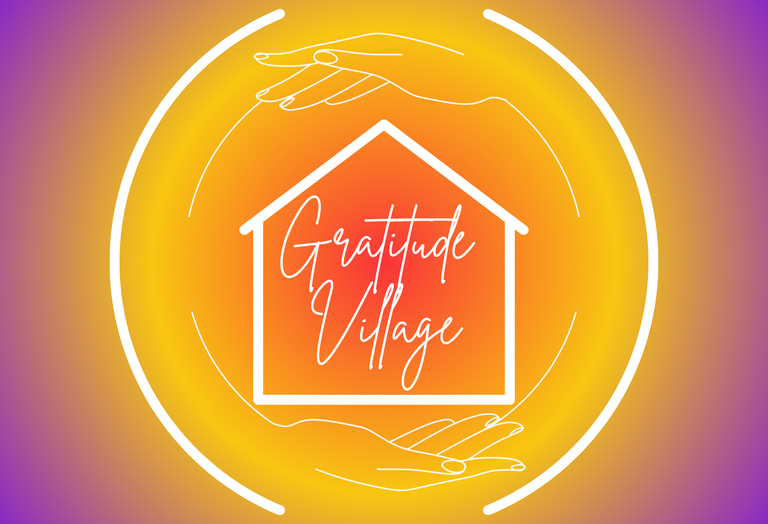Join our next Information Session via Zoom November 18 from 5-6pm MST
Economic Resilience & Prosperity in Cohousing: Thriving Together
In an era where economic uncertainty is increasingly common, communities are seeking creative solutions to build stability and security. Rising costs of living, housing shortages, and the unpredictable nature of modern economies have left many individuals and families looking for ways to ensure long-term financial resilience. One powerful answer to this challenge can be found in cohousing, a model that not only fosters social connection but also promotes economic resilience and shared prosperity. By pooling resources, sharing responsibilities, and supporting one another, cohousing communities offer a path to economic stability that goes beyond traditional approaches.
Gratitude Village
12/11/20244 min read


Economic Resilience and Prosperity in Cohousing: Thriving Together
In an era where economic uncertainty is increasingly common, communities are seeking creative solutions to build stability and security. Rising costs of living, housing shortages, and the unpredictable nature of modern economies have left many individuals and families looking for ways to ensure long-term financial resilience. One powerful answer to this challenge can be found in cohousing, a model that not only fosters social connection but also promotes economic resilience and shared prosperity. By pooling resources, sharing responsibilities, and supporting one another, cohousing communities offer a path to economic stability that goes beyond traditional approaches.
What Is Economic Resilience?
Economic resilience refers to a community's ability to withstand, adapt to, and recover from financial challenges or economic disruptions. Whether due to job loss, unexpected expenses, or broader economic downturns, the ability to respond to these challenges with strength and flexibility is crucial for long-term stability.
In cohousing, economic resilience is built into the very fabric of the community. Through shared resources, collaborative living, and a collective approach to problem-solving, residents of cohousing communities are better positioned to navigate financial uncertainties. They benefit from a support network that reduces individual financial burdens while increasing opportunities for shared prosperity.
Shared Resources: Reducing Costs Through Collaboration
One of the most significant ways cohousing promotes economic resilience is by encouraging the sharing of resources. Traditional neighborhoods often emphasize individual ownership and consumption, with each household shouldering the cost of everything from appliances, tools and vehicles to utilities and home maintenance. In contrast, cohousing is designed to minimize duplication of expenses by offering shared resources and amenities.
In most cohousing communities, residents share common spaces such as kitchens, gardens, laundry rooms, and tool sheds. This eliminates the need for every household to own costly items, such as lawnmowers, kitchen equipment, or even vehicles, which can be shared among the group. By pooling resources, the community reduces individual financial pressure while ensuring that everyone has access to the tools and amenities they need.
This collective approach also extends to larger expenditures, such as maintenance and utilities. With shared systems for things like heating, water, solar, and internet, residents can split the costs, leading to significant savings over time. The result is lower monthly living expenses and a reduced financial burden for each household, freeing up money for other purposes such as education, travel, or savings.
Financial Security Through Mutual Support
Another critical aspect of economic resilience in cohousing is the mutual support system that naturally develops within the community. When economic hardship strikes—whether it’s job loss, unexpected medical expenses, or other financial setbacks—residents can rely on one another for help. This support might come in the form of shared childcare, meal preparation, or even financial assistance during tough times.
In a traditional living arrangement, facing financial difficulties can feel isolating. In cohousing, these challenges are met with community solidarity. When one member of the community faces economic hardship, the rest of the community steps in to help mitigate the impact. This collective safety net provides a level of security that many people living in more isolated environments simply don’t have.
Additionally, cohousing communities often develop formal systems for sharing financial responsibilities and risk. Some communities maintain communal funds for unexpected expenses or large projects, ensuring that no one person is left to shoulder major costs alone. This shared responsibility not only promotes economic security but also fosters a sense of unity and trust among residents.
Sustainability and Economic Savings
Cohousing communities are frequently designed with sustainability in mind, incorporating environmentally friendly practices that reduce long-term costs for residents. Many cohousing projects focus on energy-efficient buildings, solar power, water conservation, and sustainable landscaping, all of which lower utility bills and reduce the community’s environmental footprint.
For example, communities that incorporate renewable energy sources, such as solar panels or geothermal heating, can significantly cut energy costs over time. Shared gardens and community-supported agriculture programs can reduce the cost of food while promoting healthier, locally grown options. Furthermore, cohousing developments often encourage car-sharing programs, cycling, and public transportation, reducing individual transportation costs.
By emphasizing sustainable living, cohousing communities not only contribute to environmental well-being but also create economic savings that benefit everyone. These savings, when compounded over time, contribute to a community’s overall financial resilience.
Collective Entrepreneurship and Economic Opportunity
Cohousing communities also offer opportunities for collective entrepreneurship and economic innovation. The close-knit, collaborative environment of cohousing is an ideal setting for residents to develop shared businesses or ventures that benefit the entire community. Whether it's a community garden that supplies local farmers' markets, a small business incubator, or a shared makerspace for artists and craftspeople, cohousing provides fertile ground for creative economic enterprises.
In some communities, residents may pool their skills and resources to start businesses that serve both the community and the wider market. These ventures can range from catering services and childcare to home repair or tech support businesses. The cooperative nature of cohousing provides a built-in customer base and a supportive network for entrepreneurs, reducing some of the risks associated with starting a new business.
Additionally, cohousing communities often support a local economy by prioritizing local vendors, creating a positive feedback loop of economic prosperity that benefits both residents and their surrounding region. This focus on local, community-driven economic activity contributes to a more sustainable, resilient financial ecosystem.
Prosperity Beyond Wealth: A New Definition of Success
While financial savings and economic opportunity are clear benefits of cohousing, the model also challenges the traditional notion of prosperity. In cohousing, wealth is not just measured in monetary terms but also in the richness of relationships, social capital, and community well-being. Residents benefit from a sense of belonging, security, and shared purpose that is often lacking in more conventional living arrangements.
This broader definition of prosperity acknowledges that true wealth comes from more than just financial success. By fostering deep social connections and a collaborative approach to life, cohousing communities provide residents with a sense of fulfillment and purpose that enhances their overall quality of life.
Conclusion: Thriving Together
In a world of economic uncertainty, cohousing offers a compelling solution to the challenges of financial instability and isolation. By promoting shared resources, mutual support, sustainability, and collective entrepreneurship, cohousing builds economic resilience and prosperity in ways that traditional housing models simply cannot match.
Ultimately, the strength of cohousing lies not just in the savings it offers, but in the spirit of cooperation and solidarity it fosters. In cohousing, residents thrive together—economically, socially, and emotionally—creating a vibrant, resilient community where everyone has the opportun
COMMUNITY
Join us in embracing nature, diversity and connection.
Sustainability
DIVERSITY
info@gratitudevillageco.com
720-689-4821
© 2025. All rights reserved.
AFFORDABILITY
Gratitude Village Inc. is a 501(c)3 charitable corporation that values diversity, equity, and inclusion as essential to our mission
Subscribe to our Substack
Refund Policy




Gratitude Village is a Proud Member of these organizations
